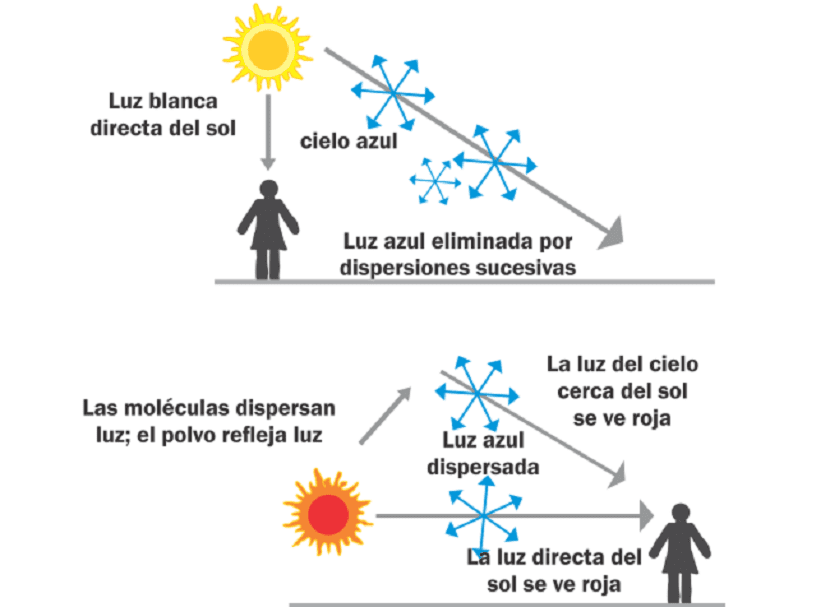
Who has not asked or has ever asked this question? And they may have told us that about… "It's the reflection of the oceans!" It's funny, if we ask the question backwards, the popular answer to why the oceans are blue is usually because the sky is blue. There is something that does not fit well right? Of course, you don't have to look for who is "painting" what, but rather where that color comes from. The white sun rays from the Sun interacting with the atmosphere, are the main responsible.
When light rays pass through transparent or translucent bodies, each of the colors that make up white light separate and drift at a certain angle. Always depending on the medium they pass through, the direction and shape will change. The white light emitted by the Sun corresponds to a fraction of all the waves that make up the electromagnetic spectrum. The color range is the same as the rainbow. In order to see this decomposition of colors, it is enough to make a ray of light pass through a prism.
Decomposing the colors of light

Electromagnetic spectrum
As the colors decompose, violet and blue wavelengths are shorter than the yellow ones (more intermediate) or its extreme, the red, with longer lengths. That is what causes this kind of fan of colors. When the sun's rays pass through the atmosphere, they do so through water vapor, dust, ash, etc. In this point, violet and blue light rays are deflected to a greater extent than yellows and reds.
These rays, constantly colliding with air particles loaded with humidity, dust and ash, cause a constant change in the trajectory. This process is known as "spreading." This is what causes that bluish color. By spreading four times faster than red colors due to the shorter wavelength, it is what causes us to have that general blue feeling and that it is not focused to a single point.
Yes, the sky looks blue during the day. But not always! Cast?

Graphic interpretation of the different shades | Gamavision
The rays that belong to the yellow and red spectra are the opposite. Their longer wavelengths make them scatter less. By traveling further in a straight line, it causes these colors to blend, giving an orange hue. Depending on the time of day in which we are, the color of the sky, it is true that it can vary. Something that we can see when sunrise or sunset, and we see the Sun near sea level or horizon.
The rays of light here have to go through a greater amount of thickness in the atmosphere. The forced interaction of a much larger quantity of water vapor particles, droplets, dust, etc., ends up forcing the following. Rays of light that tend to blue and violet are continuously scattered sideways. The rays close to the red spectrum, with straighter trajectories, continue, giving us that more orange and reddish color.
It always depends on the amount of ash and dust suspended in the air

The intensity of red color that is perceived in the sky at sunrise or sunset always depends on the amount of ash and dust suspended in the air, apart from the water vapor. That is also the main reason that when there are eruptions or fires for example, the amount of dust and ash increases, and causes those colors to be witnessed even more vividly.
A good model of this phenomenon is found on Mars. In addition, now that he is going to conquer it, it takes something more relevant to explain why the planet always looks reddish. It is precisely because of the "amount of atmosphere" it has, that it is very fine. In addition, unlike on Earth, which is mainly oxygen, there it is made up mostly of carbon dioxide. Together with the large amount of iron oxide, and the gusts of wind that raise dust, they make Mars the red planet, unlike Earth, our blue planet.